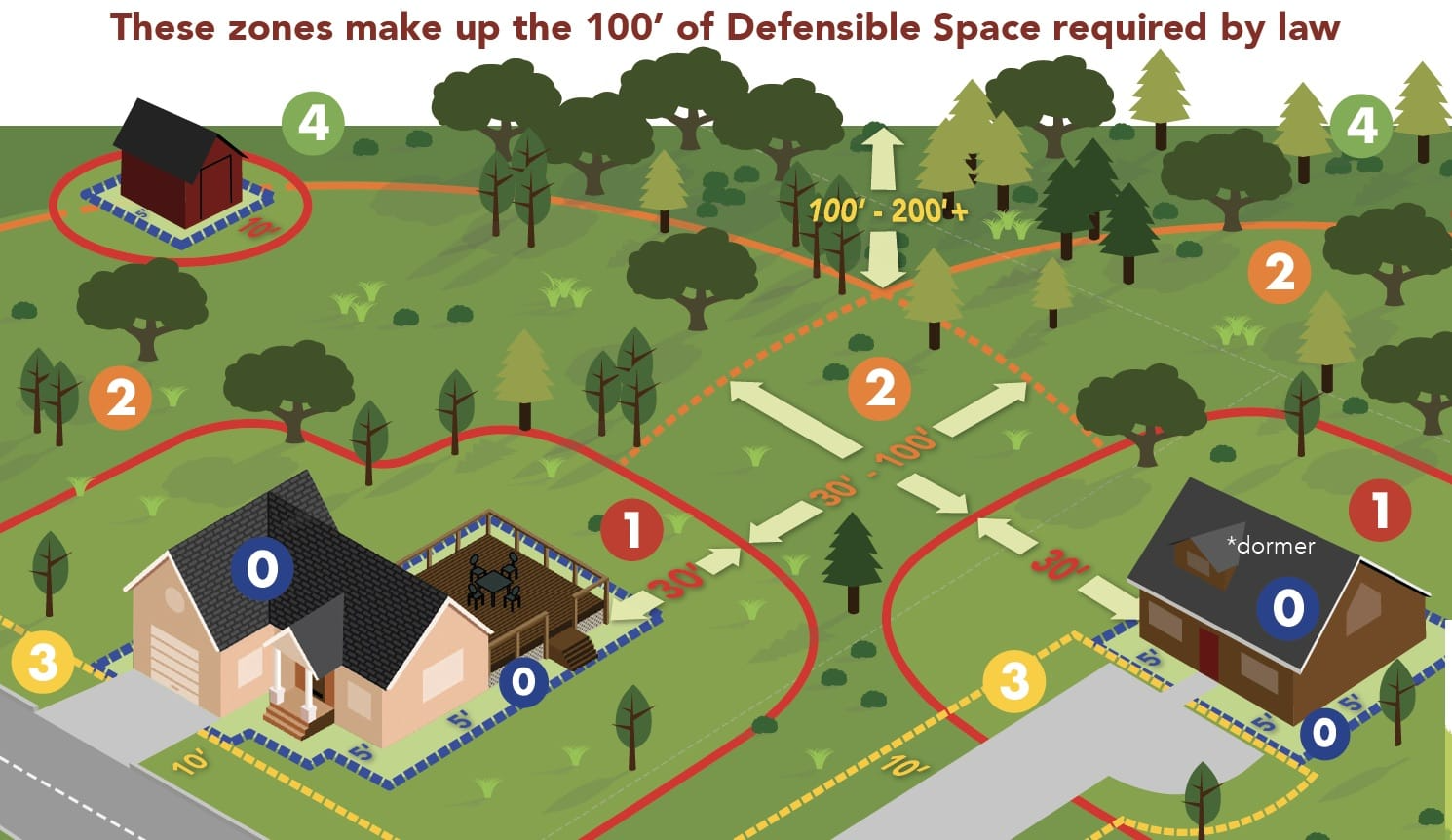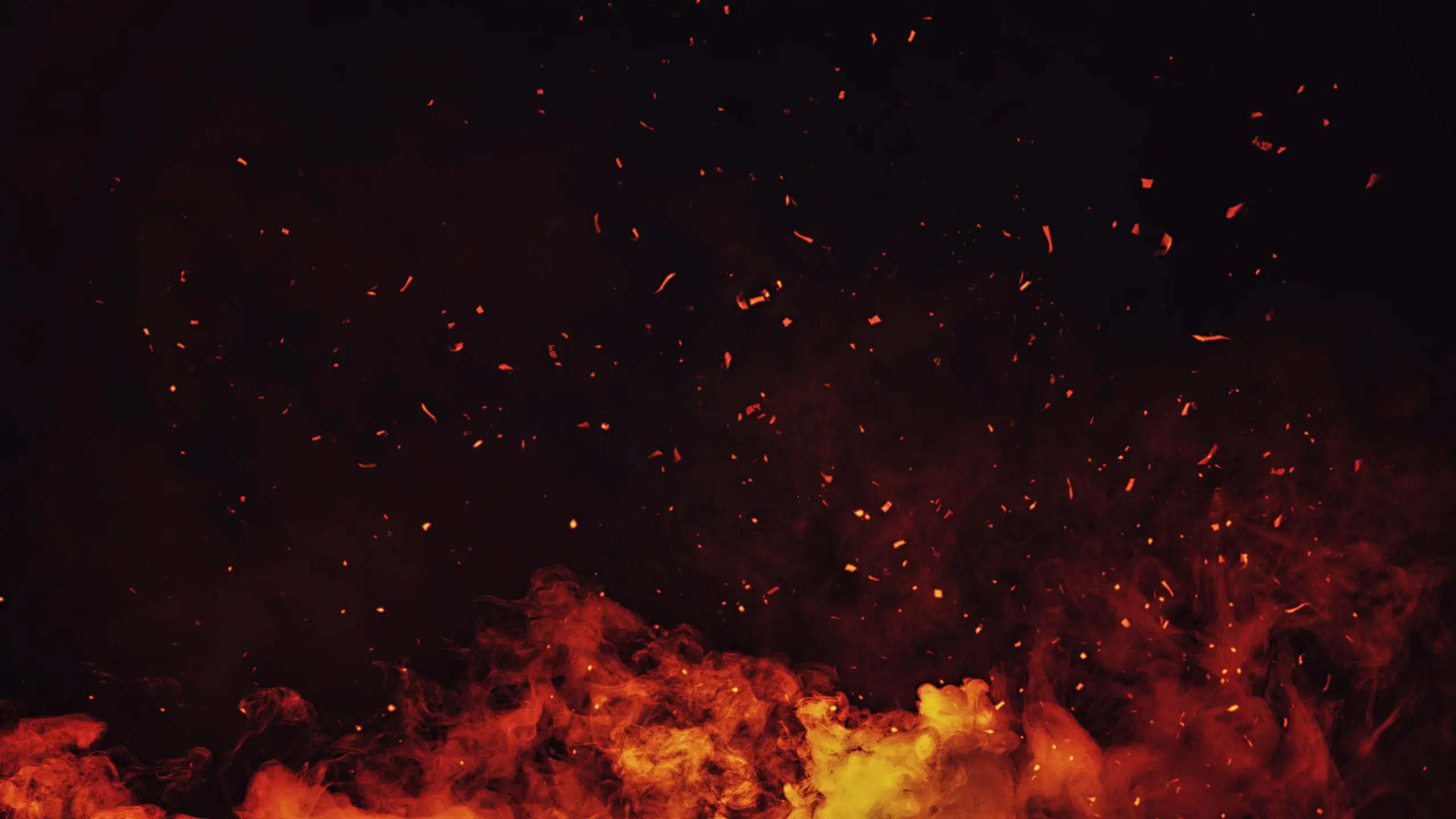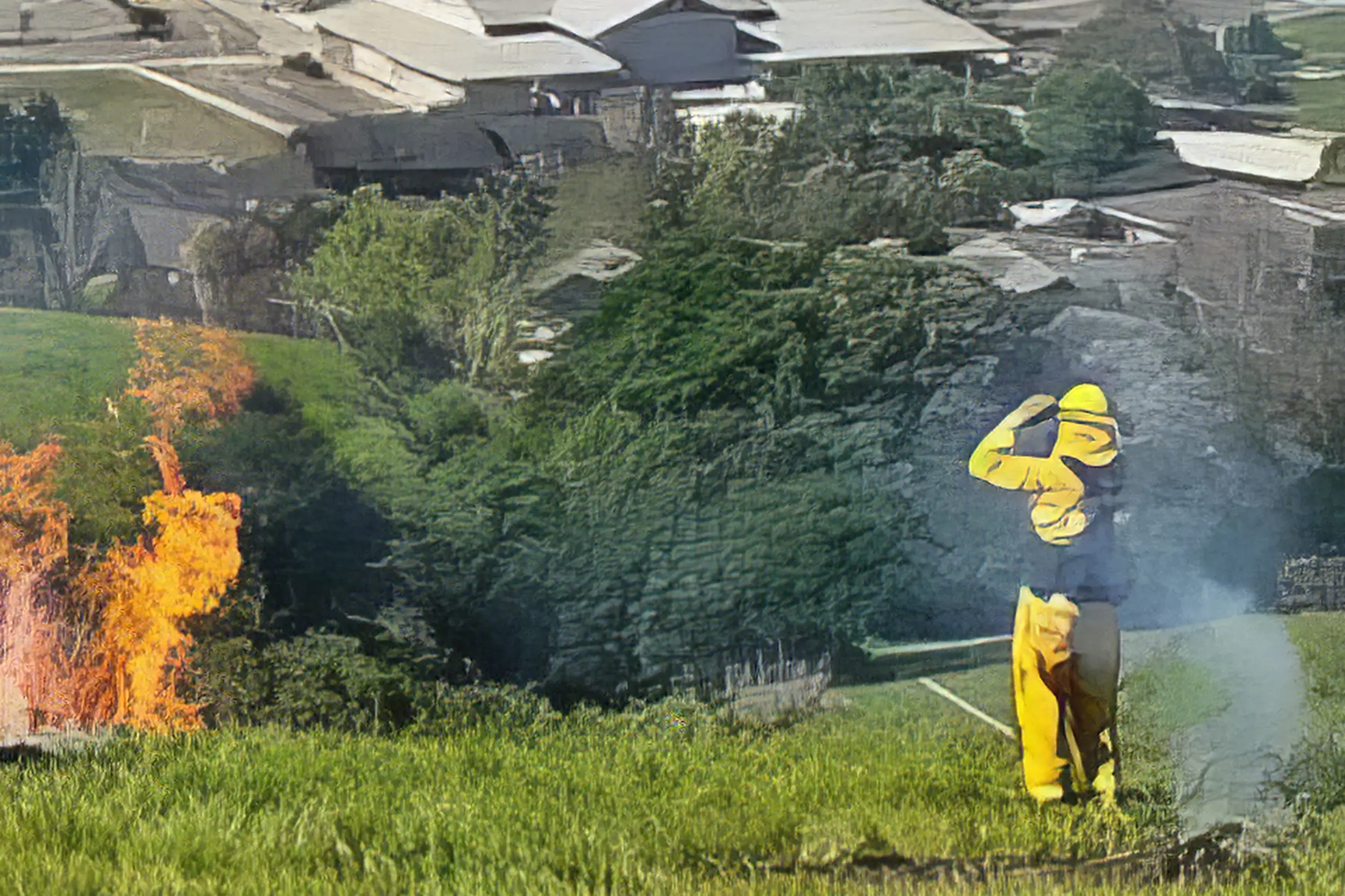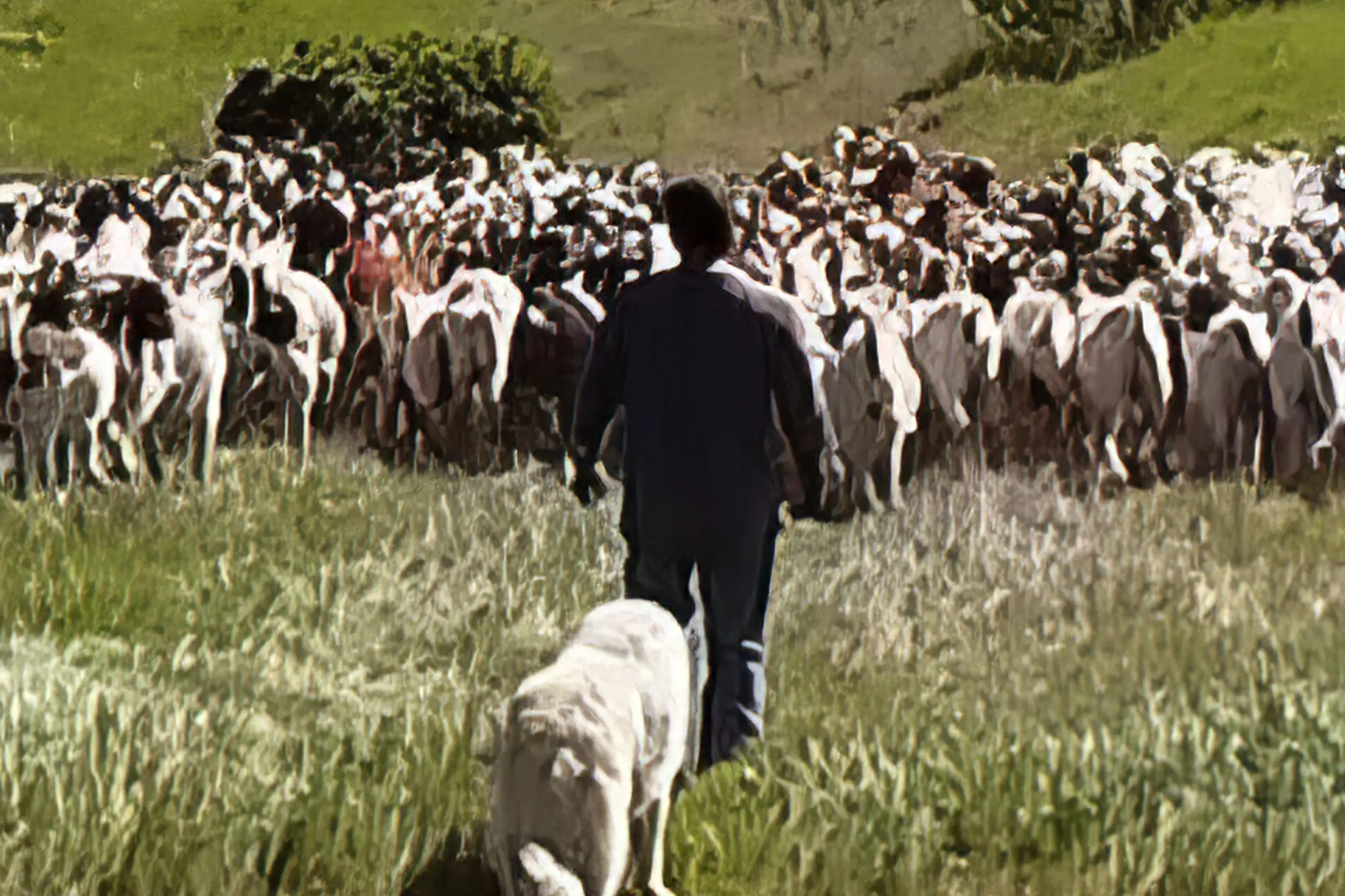IN THE EVENT OF AN EMERGENCY THIS SITE IS NOT MONITORED. FOR CURRENT INFORMATION GO TO HTTPS://EMERGENCY.MARINCOUNTY.ORG.
Defensible Space Zones
These are the 5 Defensible Space Zones
- Zone 0 extends zero to five feet from structures, including the building itself.
- Zone 1 begins five feet from your house and extends 30 feet away.
- Zone 2 lies beyond the home defense zone, extending at least 100 feet from the house or to your property line.
- Zone 3 is adjacent to roads and driveways, fourteen feet overhead and ten feet from the edge of the roadway.
- Zone 4 is area shared with neighbors and/or land management agencies. 100-200+ ft.
Wildfire scientists Steve Quarles and Jack Cohen show how wildfire generated embers carried by the wind lead to destruction of a home due to ignition of flammable materials next to and on the home itself.
Each Zone has different design requirements
Zero Zero: 0-5ft. – Ember Resistant
Zone 0, sometimes referred to as the “Ember Resistant Zone” extends 0 to 5 feet from your house. It’s the area closest to your house, including plants, decks, outdoor furniture, and the outside walls and coverings. This area is most vulnerable and should be more aggressively maintained for fire resistance. When wildfire embers land in this area, they ignite any combustible material which in turn can can ignite your home. Gravel mulch and hardscaping is very effective in this area.
Zone 1: 5-30ft. – Lean, Clean & Green
In this zone, 5-30 ft. from the home, remove dead vegetation and debris and maintain spacing between shrubs and trees. Remove “ladder fuels” (i.e. trees or shrubs that are growing under other trees) because they can increase the probability of fire moving into the tree canopy. Keep vegetation in this zone irrigated. Hardscape and plant islands or beds can help maintain horizontal separation to reduce the spread of fire.
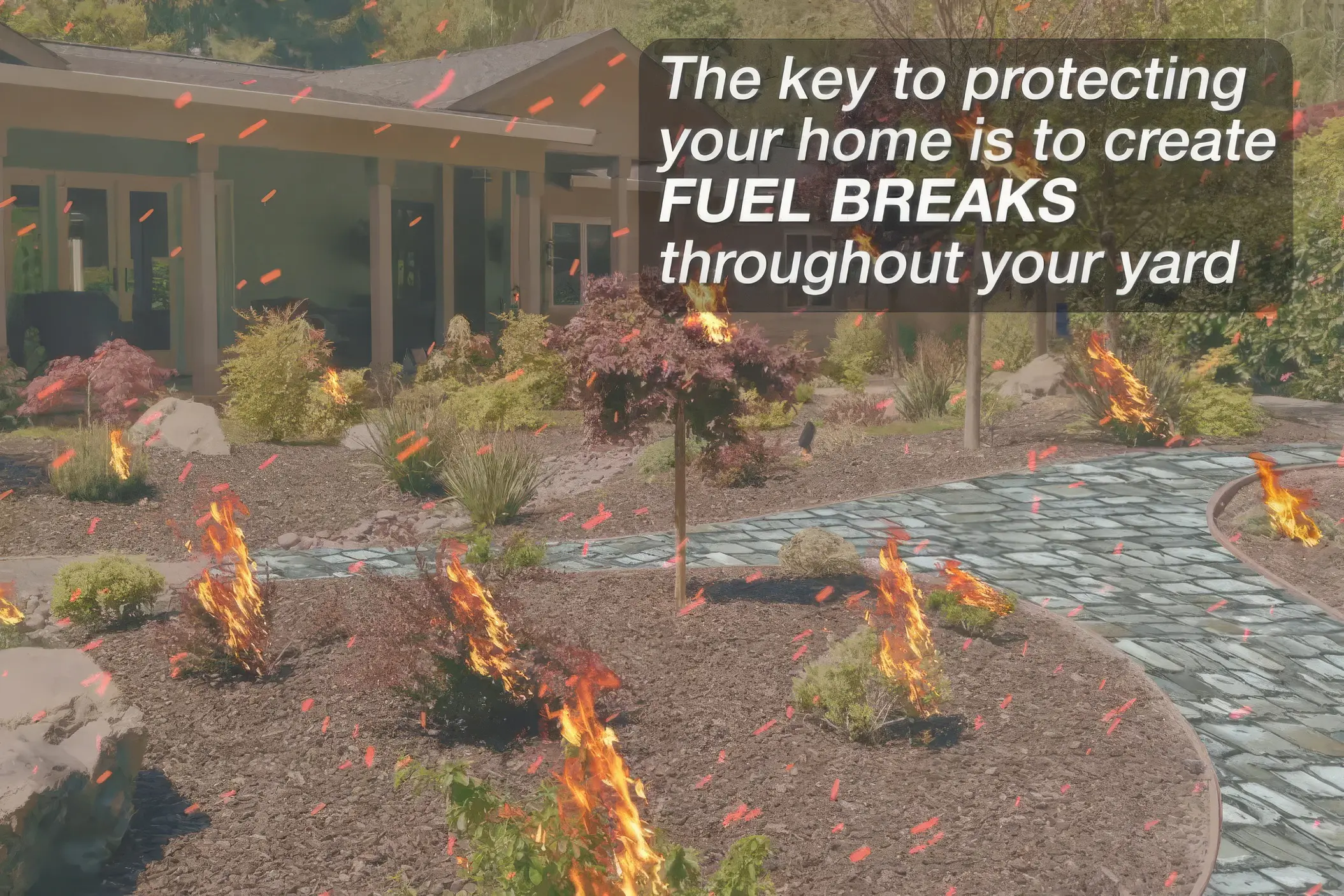
Create ember-resistant zones
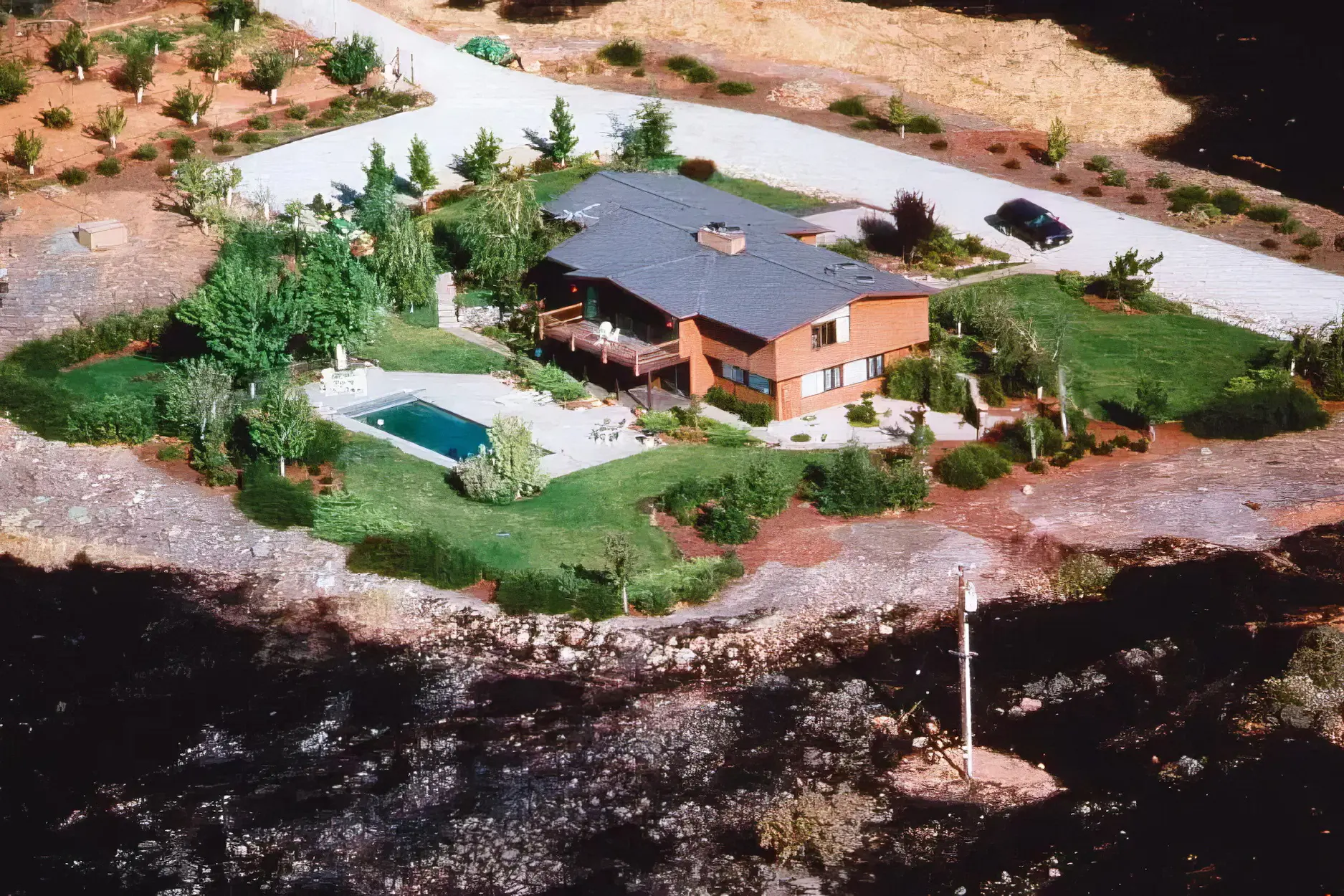
Well maintained defensible space can save a home even if surrounded by wildfire.
Zone 2: 30-100ft – Fuel Reduction
Zone 2 extends from 30ft to at least 100ft. Fuels need to be reduced in this zone. Dead grass, weeds, plants, and shrubs should be removed. Shaded fuel breaks that favor the growth of large native species by removing the understory, ladder fuels, and and invasive species can favorably modify wildfire behavior while providing the foundation for a healthy and resilient forest.
Zone 3: 0-10 ft horizontally and 14 ft vertically from roads and driveways
Zone 3, “the Access Zone”, extends from 3ft to at least 10ft horizontally from the edge of roads and driveways, and 14ft overhead. Property owners are responsible for vegetation adjacent to roads and driveways. Access roads are critical for evacuation and first responder access. Maintenance is required year-round.
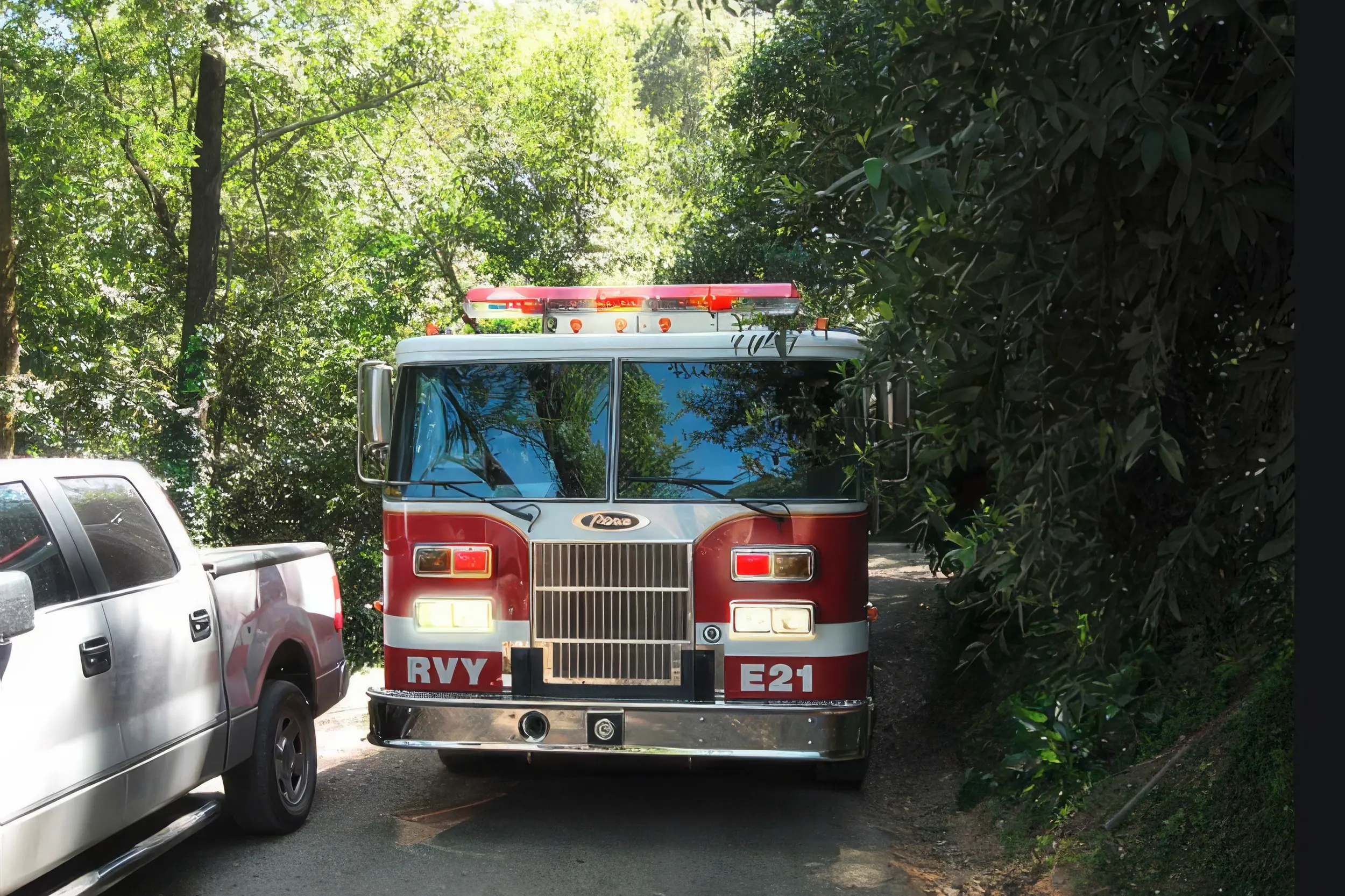
Clear trees, limbs and flammable vegetation encroaching on roadway or driveway
Zone 4 : 100 – 200 feet+
Zone 4, “the Community Zone” can include 100-200 feet depending on the layout of the houses. Many homes do not have 100’ of space between structures and parcel lines. Property owners are required to maintain defensible space to their property line. California and local laws do not require you to create defensible space on property you don’t own. Work with your neighbor to gain permission to clear defensible space on their property if it will help protect your home! In most cases, the most effective solution is a cooperative approach between neighbors.
Defensible Space Studies
Wildfire science has come a long way in recent years to better our understanding of the conditions that accelerate and reduce wildfire risks. The following studies show that defensible space around structures and firescaping principles substantially improve the odds of a home surviving a wildfire.
In UC ANR Publication 8695, Valachovic, Quarles and Swain describe defensible space as a “term used to describe actions to take in zones around a home that involve careful selection, location and maintenance of vegetation and other combustible materials on a property.
The goal of defensible space is to
- eliminate pathways for a wildfire to burn directly to the home
- reduce radiant heat exposures
- reduce the potential for embers to ignite vegetation and other combustible materials adjacent to the home
- provide a safe place for fire personnel to defend the home and allow safe routes for evacuation
Defensible space is the buffer you create between a building on your property and the grass, trees, shrubs, or any wildland area that surround it. Defensible space will help slow or stop the spread of wildfire and protect your home from catching fire – either from direct flame contact or radiant heat. Defensible space is also important to help protect firefighters when they are defending your home. Creating defensible space does not mean you need a ring of bare dirt around your home! Through proper planning, you can have both a beautiful landscape and a fire safe home.
Your home may be the most valuable investment you ever make. If you live in a high-risk fire hazard area, protect against the chance of losing that investment by creating defensible space and hardening your home with fire-resistant construction materials and design.
Valachovic, Quarles, and Swain further state that “implementing an effective defensible space strategy requires that overgrown, dense, or unmaintained vegetation creates significant vulnerabilities and that it can enable fire to burn to the home through several fire-spread scenarios, including ember ignition of vegetative debris on the ground and ember ignition of vegetative debris on roofs. Ignition of outbuildings can also occur due to emergency ignition of nearby combustibles. These fire-spread scenarios can also result in radiant heat or flame contact exposures to the home.”
Defensible space is required by law. Check with your local fire department for any additional defensible space or weed abatement ordinances.
FAQS
Our property line is 10 feet from our home and there are several properties adjoining, all with overgrown vegetation. Do our neighbors have a responsibility to maintain defensible space on their land adjoining us?
Some Marin fire agencies have adopted fire code language that may require neighboring properties to provide some vegetation clearance to protect their neighbor’s home. State law does not necessarily require this. Fire Safe Marin encourages neighbors to work together and to grant permission to their neighbors to work on adjoining properties to gain defensible space. Contact your local fire department for an interpretation of the fire code that applies to your neighborhood. You can find more information about codes and regulations related to tree hazards and the responsibility of neighbors to maintain their property here.
The information contained on this page is derived from several print and online sources:
- University of California Publication No. 8695, Reducing the Vulnerability of Buildings to Wildfire Vegetation and Landscaping Guidance, 2021 (UC Agriculture and Natural Resources)
- University of California Publication No. 8228, Home Landscaping for Fire, 2007 (University of California, Davis)
- Website http://www.readyforwildfire.org, Wildfire is Coming: Are You Ready , 2012 (California Department of Forestry and Fire Protection (CAL FIRE))
- Urban Forestry Associates, Ray Moritz, Urban Forester and Fire Ecologist

